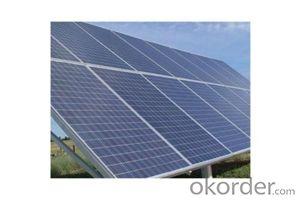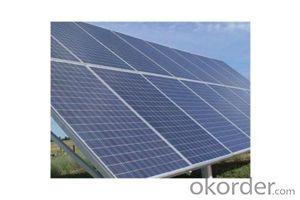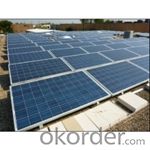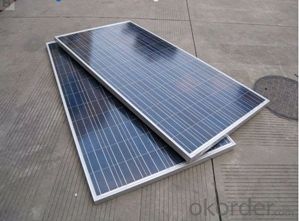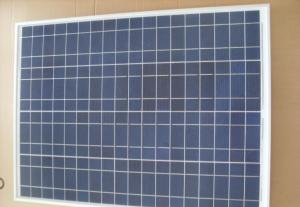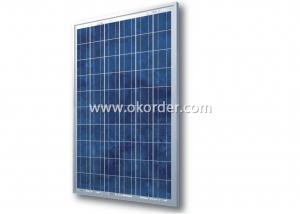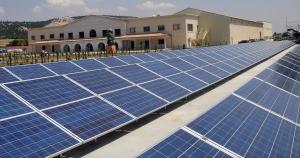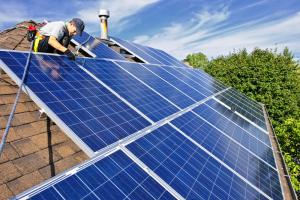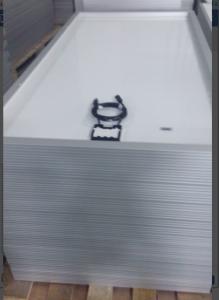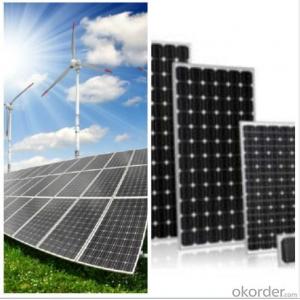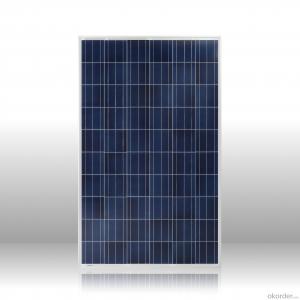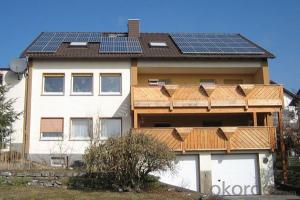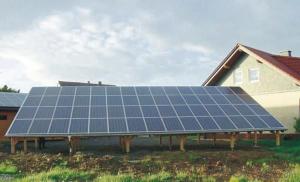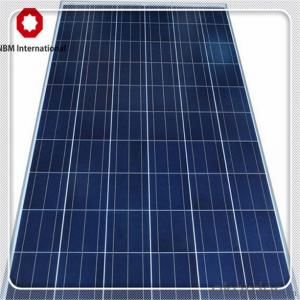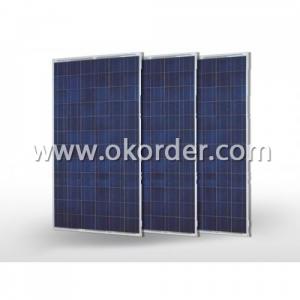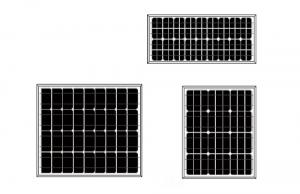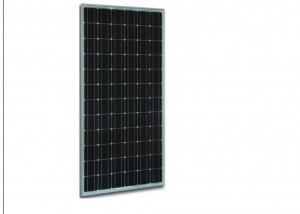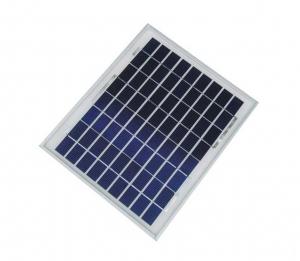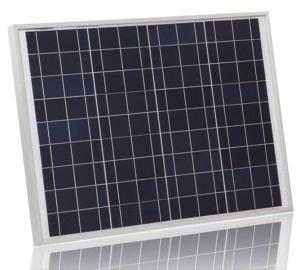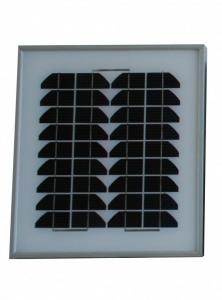Portland Solar Panels - Factory Direct Sale:A-Grade High Efficiency 250W Poly Solar Panels
- Loading Port:
- Shanghai
- Payment Terms:
- TT OR LC
- Min Order Qty:
- 5000 watt
- Supply Capability:
- 40000000 watt/month
OKorder Service Pledge
Quality Product, Order Online Tracking, Timely Delivery
OKorder Financial Service
Credit Rating, Credit Services, Credit Purchasing
You Might Also Like
Current
Our solar cells are widely used in solar pump, solar lighting, lamps, household electricity, traffic, communication, meteorological, building and photovoltaic power plants and so on.
Characteristics
Max Power Voltage Vmp(V): 30.4
Max Power Current Imp(A): 8.26
Open Circuit Voltage(V) : 37.5
Voc(V)Short Circuit (A): 8.88
Current Isc(A)Max Power Pm(W): 250
Temperature Coefficient of Cells
| NOCT | 45 |
| Temperature Coefficients of Isc(%/℃) | 0.04 |
| Temperature Coefficients of Voc(%/℃) | -0.34 |
| Temperature Coefficients of Pmp(%/C) | -0.42 |
Mechanical Data
| Dimension | 1638x982x35 |
| Weight | 18kg |
| No. of Cells and Connections | 60(6x10) |
| Tolerance | 0~+5W |
| Cell | Polycrystalline Cell |
| Packing | 812 Pcs/40ft(H) Container |
Limits
| Opening Temperature | -40℃ to +85℃ |
| Storage Temperature | -40℃ to +85℃ |
| Max System Voltage | 1000VDC(IEC)/ 600VDC(UL) |
Guarantees
| Products Guarantee | 12yrs free from defects in materials and workmanship |
| Performance Guarantee | No less than 90% within 10yrs and no less than 80% within 25yrs |
| Certificates | TUV(IEC61215&IEC61730), CE |
IV Curve

- Q: i have to do a science fair project and thought it would be cool to make a solar powered vw bus. i have 2 6volt solar panels to power a dc motor that works off of 9v 2v or 8v. i also bought a 2nd motor because the first wasnt workin for us. this one is a 3v motor. ive had them in the sun but they wont work. please help, thanks
- Solar Dc Motor
- Q: For a computer technology project we are using solar panels and trying to see different methods that will increase the output of solar power from these panels. For now, we have got polymer stickers and mirrors. Are there any more methods, or information that increase the solar power? Please and thank you :)
- Solar okorder /... to find local solar panel info and viability by city/state.
- Q: I have seen DIY software which explains everything for novices. Specifically, how to build your own solar panels and tie them into your home electrical system for about $00 in parts.Has anyone tried doing this? Was it easy?
- The output of this system will be very small, but it is a staring point. You should consider solar water heating as a way to save on your energy bills. Heating your water accounts for about 25% of your energy use. If you can cut that by 75%, you will save a lot of money. Depending on where you are and how many are in your household, it may cost about $5000 for a do-it-yourself installation. There are tax incentives available that could potentially pay for as much as half of the system. These systems can pay for them selves in as little as 4 - 5 years.
- Q: Can solar panels be used to power a university?
- Yes, solar panels can be used to power a university. By installing a sufficient number of solar panels on campus buildings or in open spaces, universities can generate a significant amount of clean and renewable energy. This can help reduce reliance on fossil fuels, decrease electricity costs, and contribute to a more sustainable campus. Additionally, advancements in solar technology have made it more efficient and affordable, making it a viable option for universities looking to transition to renewable energy sources.
- Q: I want to know how to hook up a Solartech SPM020P-R, 20W Solar Panel to a single outlet that you can but at a store.
- That solar panel puts out about amp (in round numbers). If you are talking about a 20vac outlet, you'll have to send the output of the solar panel through an inverter. That brings it up to 20vac. 20 watts at 20 volts means you'll only be able to draw 0.6667 amps. With an inverter at 85% efficiency, you'll only get about 0.4 amps. That would barely light a CFL. 20 watts of power at 7 volts = amp (in round numbers) 20 watts of power at 20vac = 0.6667 amp (in round numbers) Power (watts) = current x voltage. If you increase voltate, you must decrease current to get the same watts. Watts is the common denominator in power measurement.
- Q: Can solar panels be installed in areas with high pollution levels?
- Yes, solar panels can be installed in areas with high pollution levels. While pollution can reduce the efficiency of solar panels to some extent by blocking sunlight, they can still generate electricity even under such conditions. Regular maintenance and cleaning can help mitigate the impact of pollution on the performance of solar panels, making them a viable option even in areas with high pollution levels. Additionally, installing solar panels can help combat pollution by promoting the use of clean, renewable energy sources.
- Q: I have 2 20 watt Solar panel. I have it hooked up to solar controller and batteries to inverter. Am trying to figure out how much watts am getting. I found the voltage but how do I find the amp reading on a mutimeter?
- It is possible your meter does not have the capacity to safely measure more than 300 milliamps which is too small to measure current output from solar panels. Assuming no losses in the system or components, if your meter does not have the capacity to measure 0 Amps, you will need to get one that does. Analogs are better than digitial for this. Most often the 0 Amp circuit of the meter has a discrete positive plug location for the positive test lead. Most have a common ground connection with the rest of the meter functions. If you are measuring current at the battery in the charge mode- Negative lead of meter goes to positive terminal of battery and positive lead of meter goes to the cable that was connected to the positive terminal of the battery. Since the Wattage is a nominal measurement, if you measure between the panel and controller, take measurement on one leg of the panel, as you want to measure the current with the loaded active circuit. Meter is oriented the same way as the measurement at the battery would be made above only this time the meter is between the panel and controller. At peak solar conditions, expect current to be measured at 2.5 to3 Amps or more per panel. Under optimal conditions your panel will have higher output than their ratings indicate. Open circuit can be close to 20 volts. Never short circuit the output of the solar panels. It is volts multiplied by amps that gives you Watts.
- Q: I thought that I had a fairly good understanding of watt's law, but i'm starting to doubt myself.If I have a load of 4500watts at 240 volts, how many watts of solar panels do I need, if the solar panels are at 2v?Yes, Yes... I have a charge controller, batteries, etc...So the way I looked at this at first:watts = volts * amps For the load4500 = 240 * xx would be 8.75aFor the power source (each solar panel)00 = 2 * xx would be 8.3a8.75 / 8.3 = 2.25, rounded up = 3So... based on that I came to the conclusion that I needed 3 solar panels...But... then I was thinking. Does it work that way?Or do I need 4500 / 00 = 45, aka 45 solar panels?In other words...If I have a 2v power source, how many watts do I need to drive a load of 4500w at 240v?ThanksMatt
- The easy way is to just use the power values. You need 4500W. Each solar panel delivers 00W (from a value in your working). Therefore you need 4500/00 = 45 solar panels. This is a crude calculation, ignoring efficiencies, voltage conversion losses and losses due to internal resistance. You would probably need quite a few more than 45 panels. ___________________________ I'll explain how to do the calculation your way. Each solar panel delivers 00W with a voltage of 2V. So the current is 00/2 = 8.333A. Each solar panel delivers 8.333A at 2V. But you require 8.75A at 240V panel delivers 00W. To get 4500W, you need: 8.75/8.333 = 2.25 times more panels to increase the current AND 240/2 = 20 times more panels to increase the voltage. So overall you need 2.25 x 20 = 45 panels. Of course if the power output of each solar panel is not 00W, you have to change the above calculation accordingly.
- Q: I'm going to this camp and the instructors asked us to be prepared tomorrow to build a sun tracker for a solar panel. Does any one have any ideas, tips, or advice?
- Since the sun moves in the sky on a very predicatable course you don't need a closed loop control system to track it. All you need is a clock-drive motor and the proper gearing for your latitude. The clock drive motor will move at a constant rotational velocity based on time, and when it is geared down properly the angle of the shaft will follow the sun. Make sure the clock motor is powerful enough to move the solar panel, etc. That's a start, anyway. .
- Q: Can solar panels be used in agriculture?
- Yes, solar panels can be used in agriculture. They provide a renewable and clean source of energy that can power various agricultural activities such as irrigation systems, lighting, and machinery. Additionally, solar panels can be installed on agricultural buildings or unused land, allowing farmers to generate their own electricity and reduce their carbon footprint.
Send your message to us
Portland Solar Panels - Factory Direct Sale:A-Grade High Efficiency 250W Poly Solar Panels
- Loading Port:
- Shanghai
- Payment Terms:
- TT OR LC
- Min Order Qty:
- 5000 watt
- Supply Capability:
- 40000000 watt/month
OKorder Service Pledge
Quality Product, Order Online Tracking, Timely Delivery
OKorder Financial Service
Credit Rating, Credit Services, Credit Purchasing
Similar products
Hot products
Hot Searches
